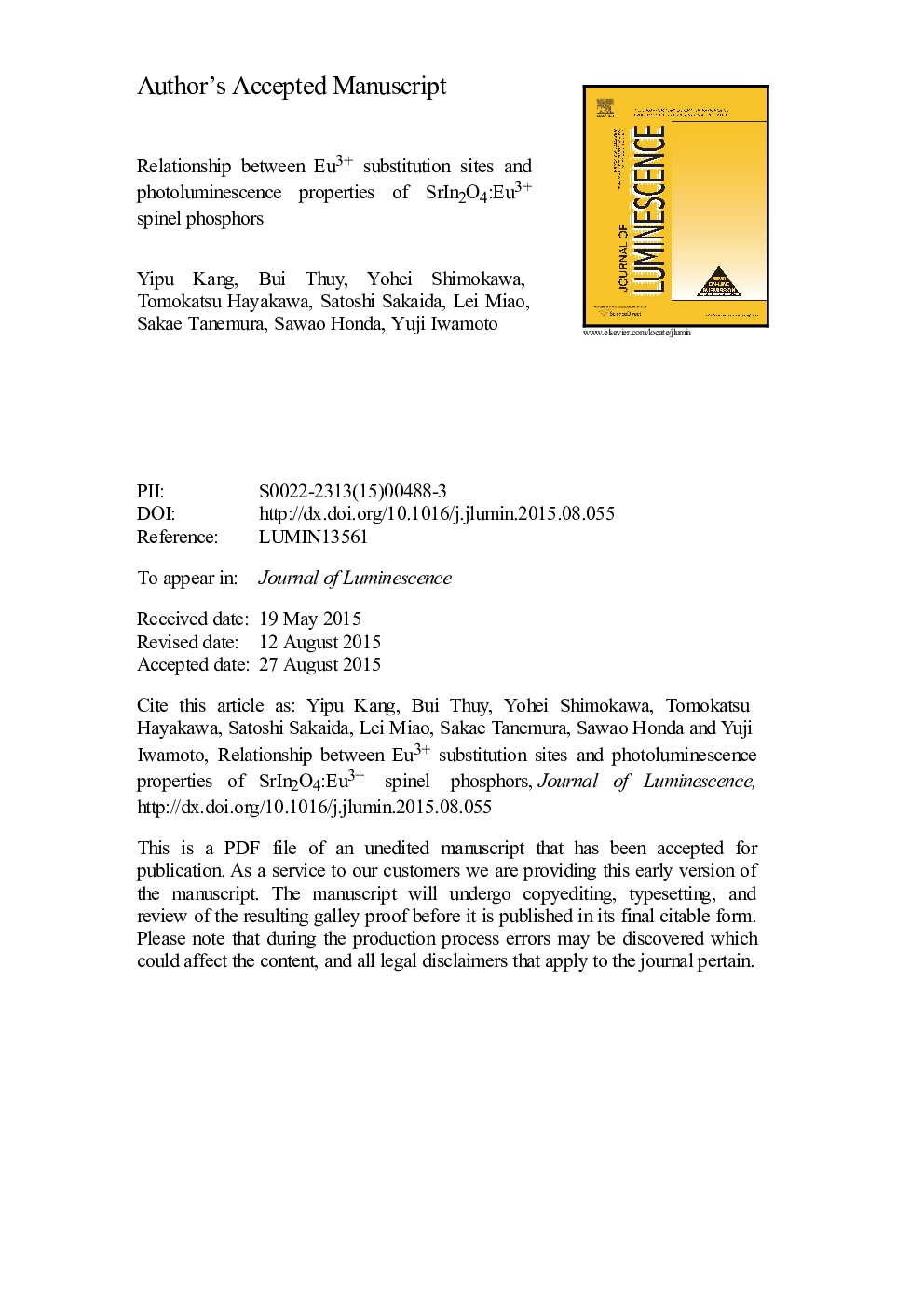| Article ID | Journal | Published Year | Pages | File Type |
|---|---|---|---|---|
| 5399213 | Journal of Luminescence | 2016 | 34 Pages |
Abstract
Eu3+-doped SrIn2O4 phosphors were synthesized by the solid solution method at 1400 °C in air. The chemical composition of the phosphors was systematically changed to study the relation between the Eu3+ substitution site and photoluminescence (PL) properties. Under excitation of the 7F0â5L6 transition of Eu3+ at 393 nm, the SrIn2O4:Eu3+ exhibited dominant red emission peaks at 611, 616 and 623 nm, which are attributed to the electric dipole transition 5D0â7F2 of Eu3+. The results of X-ray diffraction analysis combined with PL spectroscopic analysis revealed that Eu3+ ions occupied two different crystallographic In3+ sites in the host SrIn2O4, while it was found to be impossible to substitute Sr2+ with Eu3+ prior to the Eu3+ substitution at the In3+ sites in the SrIn2O4. The intensity of the red emission peaks increased with the total amount of dopant Eu3+ ion at the two In3+ sites, and reached a maximum at 25 mol% Eu3+-doping (SrIn2âxO4:xEu3+, x=0.25). Moreover, a small amount (<10 mol%) of Eu3+ at the Sr2+ site in the SrIn2âxO4:xEu3+ was found to contribute to enhance the red emission peak intensity at 616 nm. As a result, the highest red emission intensity evaluated as the total emission peak intensities at the 611, 616 and 623 nm was achieved for Sr0.92In1.75O4:0.33Eu3+ in which Eu3+ ion concentrations at the In3+ and Sr2+ sites were simultaneously optimized as 25 and 8 mol%, respectively (Sr1âyIn2âxO4:(x+y)Eu3+, x=0.25, y=0.08). This red emission intensity was 2.2 times higher than that of the phosphor without contribution of the Eu3+ at the Sr2+ site (SrIn2âxO4:xEu3+, x=0.25). The critical energy transfer distance of Eu3+ ion in the Sr0.92In1.75O4:0.33Eu3+ phosphor was determined to be 0.817 nm, and the electric multipolar interaction was suggested as the dominant mechanism for concentration quenching of PL emission due to Eu3+ ions in the Eu3+-doped SrIn2O4 phosphors investigated in this study.
Keywords
Related Topics
Physical Sciences and Engineering
Chemistry
Physical and Theoretical Chemistry
Authors
Yipu Kang, Bui Thuy, Yohei Shimokawa, Tomokatsu Hayakawa, Satoshi Sakaida, Lei Miao, Sakae Tanemura, Sawao Honda, Yuji Iwamoto,
